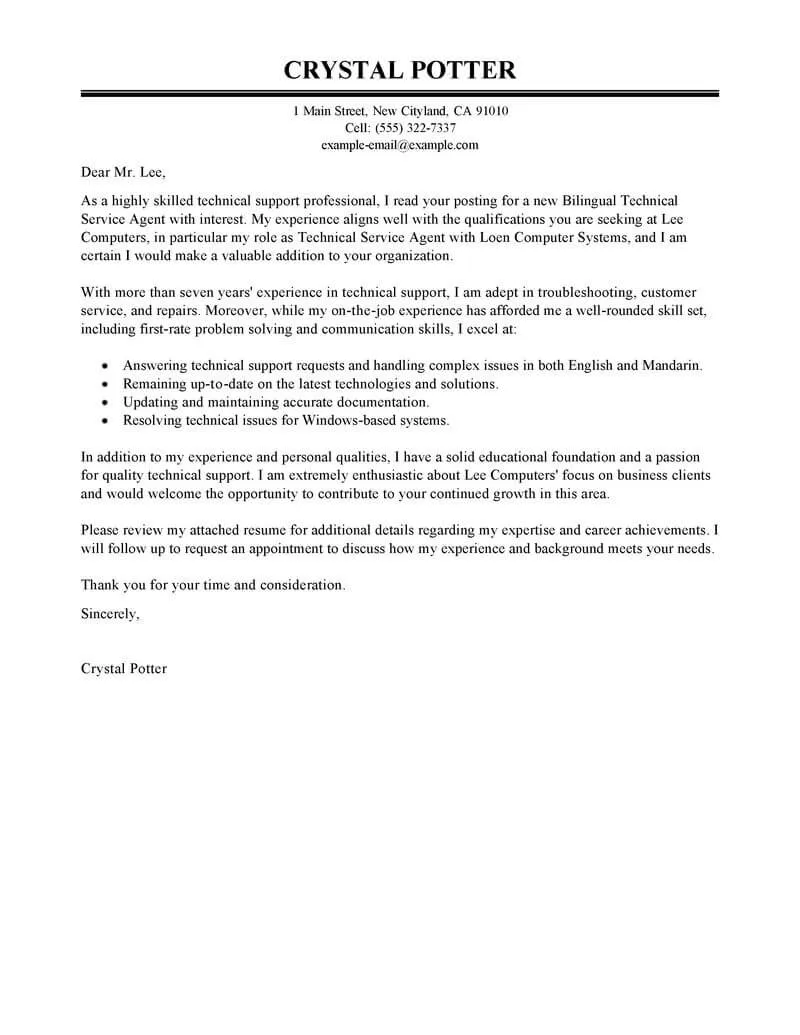Crafting Your Help Desk Support Cover Letter
A well-crafted help desk support cover letter is your first introduction to a potential employer. It’s your opportunity to showcase your skills, experience, and enthusiasm for the role. Unlike a resume, which provides a factual overview, a cover letter allows you to tell a story, explain your career goals, and highlight why you’re the ideal candidate. This guide will walk you through the essential steps to create a compelling cover letter that grabs the attention of hiring managers and increases your chances of landing an interview. Remember, a strong cover letter isn’t just a formality; it’s a powerful tool in your job search arsenal. Begin with the right mindset and focus, aiming to distinguish yourself from other applicants. By highlighting your relevant experience and expressing your eagerness to contribute, you can significantly increase your chances of success.
Understanding the Purpose
The primary purpose of a help desk support cover letter is to complement your resume by providing context and depth. It allows you to elaborate on your skills and experiences, demonstrating how they align with the specific requirements of the job. It should express your interest in the company and the specific role. Also, use it to explain why you are a perfect match. The cover letter should reflect your personality, communication skills, and your understanding of the company’s values and the help desk’s specific needs. A compelling letter showcases your ability to communicate effectively, your problem-solving skills, and your passion for providing excellent customer service. It sets the tone for your application, making it easier for the hiring manager to see your potential and envision you as a valuable member of their team.
Highlighting Your Skills
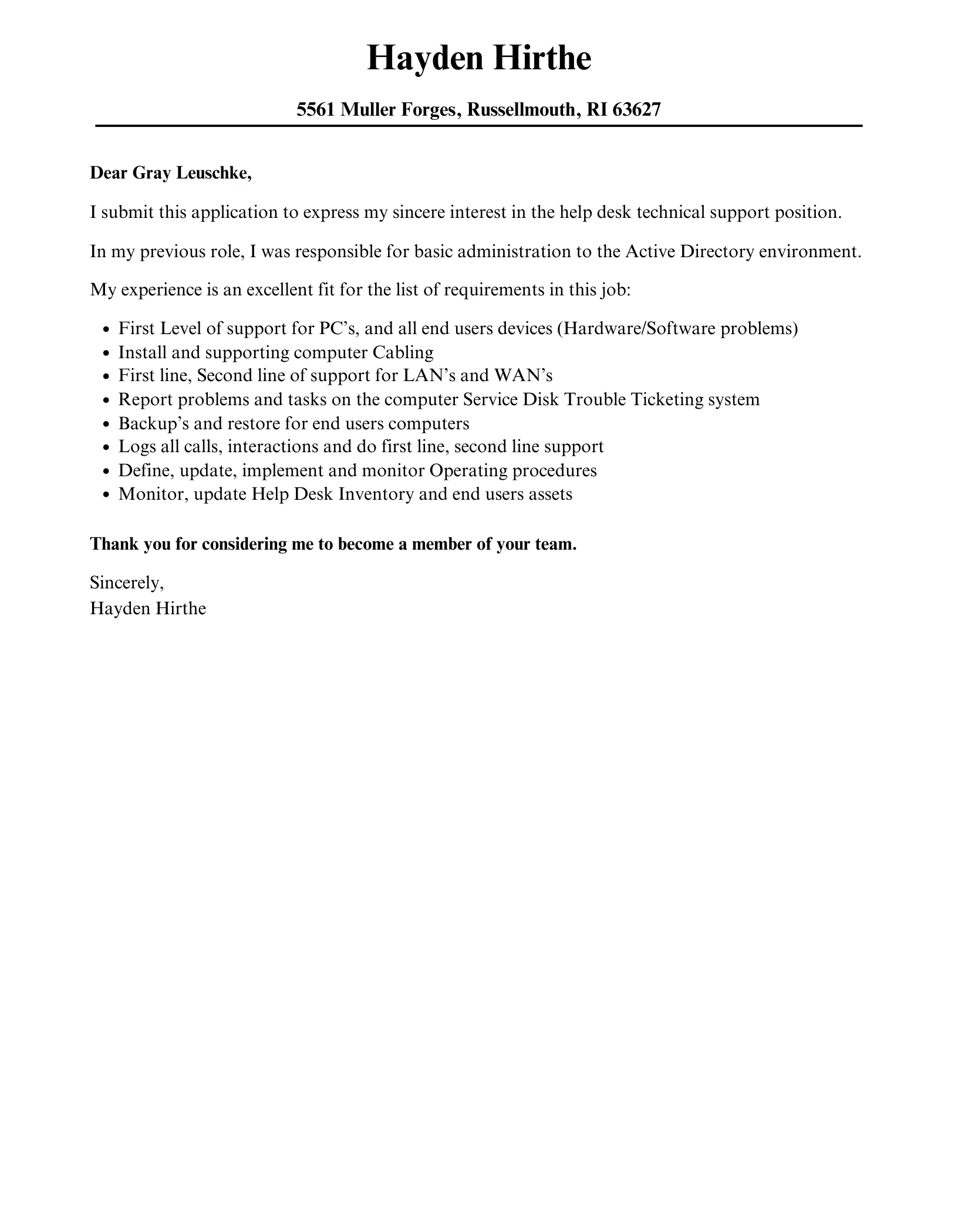
Your help desk support cover letter must highlight the technical and soft skills that make you an ideal candidate. Technical skills often include proficiency in operating systems (Windows, macOS), ticketing systems (ServiceNow, Zendesk), remote access tools, and hardware and software troubleshooting. Don’t just list these skills; provide specific examples of how you’ve used them in the past to solve problems. On the soft skills side, emphasize communication, problem-solving, active listening, empathy, and the ability to work under pressure. Give examples of how you have successfully dealt with difficult customers, managed competing priorities, or collaborated with a team to resolve complex technical issues. Quantify your achievements whenever possible, such as the number of tickets resolved per day or the improvement in customer satisfaction scores due to your efforts. By showcasing a blend of technical and soft skills, you demonstrate your well-rounded capabilities and suitability for the role.
Key Elements for a Compelling Cover Letter
Header and Contact Information
Start your cover letter with a professional header that includes your contact information. This should typically include your full name, phone number, email address, and optionally, your LinkedIn profile URL. Ensure your email address is professional and appropriate for job applications. Include the date, the hiring manager’s name (if you know it), and the company’s address. This section sets the tone and provides the necessary details for the employer to contact you if they are interested. Proper formatting, clarity, and accuracy are essential in this section. By including a professional header, you demonstrate attention to detail and organizational skills, both of which are crucial in the help desk support field.
Greeting and Introduction
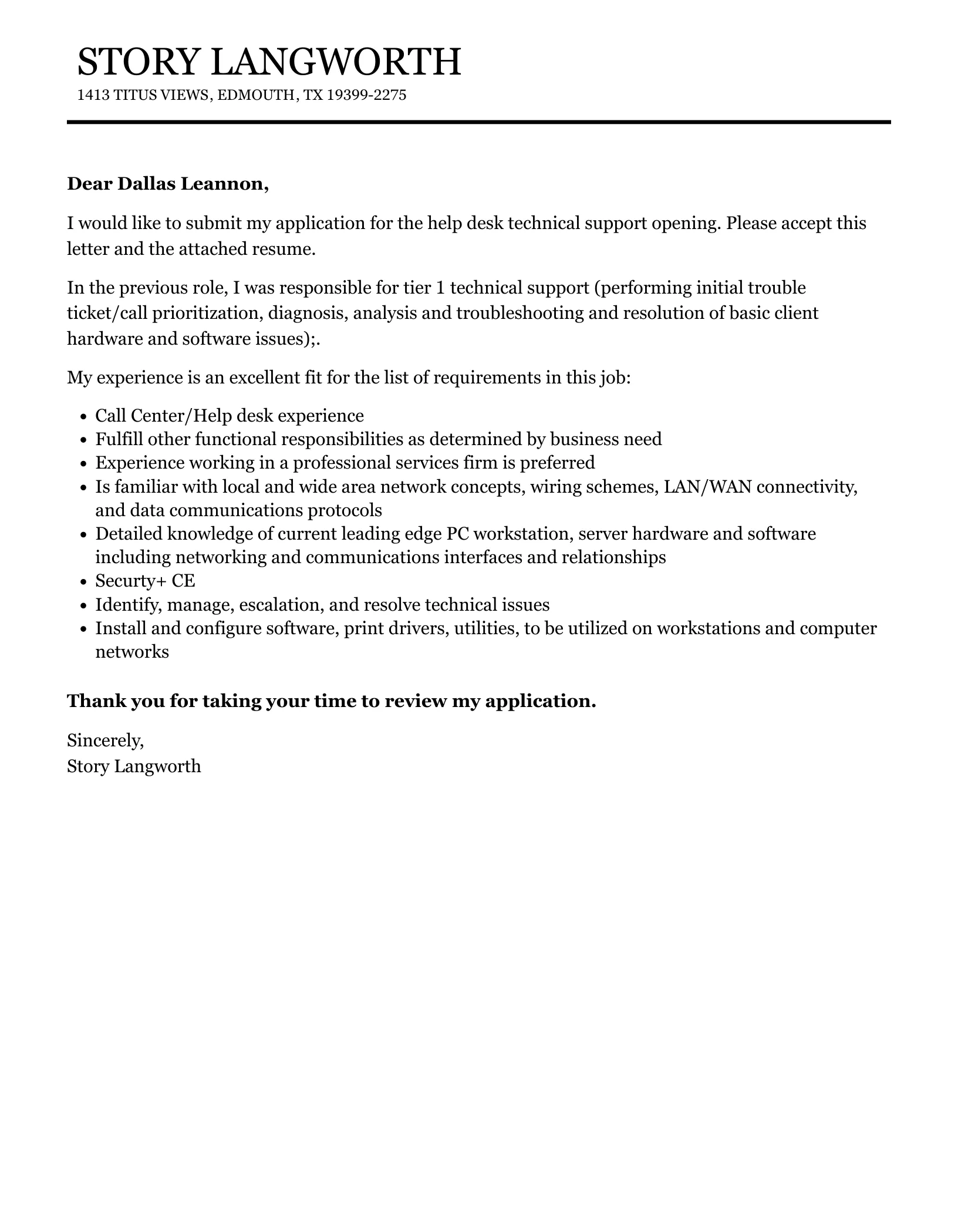
Your greeting should be professional and personalized. If you know the hiring manager’s name, use it (e.g., “Dear Mr. Smith”). If not, use a general greeting like “Dear Hiring Manager” or “Dear [Company Name] Hiring Team.” The introduction should immediately grab the reader’s attention. State the position you are applying for and briefly explain why you are interested in the role and the company. Briefly mention your most relevant skills or experience that align with the job description. Your introduction should convey your enthusiasm, making the hiring manager want to read the rest of your letter. A strong introduction sets a positive tone and encourages the reader to learn more about your qualifications.
Body Paragraphs
The body paragraphs form the core of your cover letter. Use these to highlight your skills, experience, and achievements in detail. Each paragraph should focus on a specific aspect of your qualifications and should be backed by concrete examples. Explain how your past experiences have prepared you for the help desk support role. Provide specific instances where you have successfully resolved technical issues, provided excellent customer service, or worked as part of a team. This demonstrates your ability to apply your skills in a practical setting. Tailor your body paragraphs to the specific requirements of the job description, showing how your skills and experience align with what the employer is seeking. Use action verbs to describe your accomplishments and quantify your achievements whenever possible. This will help the hiring manager clearly see your value and contribution.
Tailoring Your Letter
Every cover letter should be tailored to the specific job and company. Generic cover letters are easily identified and often discarded. Research the company, understand its values, and tailor your letter to reflect your understanding of its needs. Review the job description carefully and identify the key skills and qualifications they are seeking. Address these directly in your letter, providing examples that demonstrate your ability to meet their requirements. Personalize your letter by referencing the company’s mission, recent projects, or news articles. Show that you are interested in more than just a job; you are also excited about contributing to the company’s success. Tailoring your cover letter is crucial to showing you are a good fit for the company.
Showcasing Relevant Experience
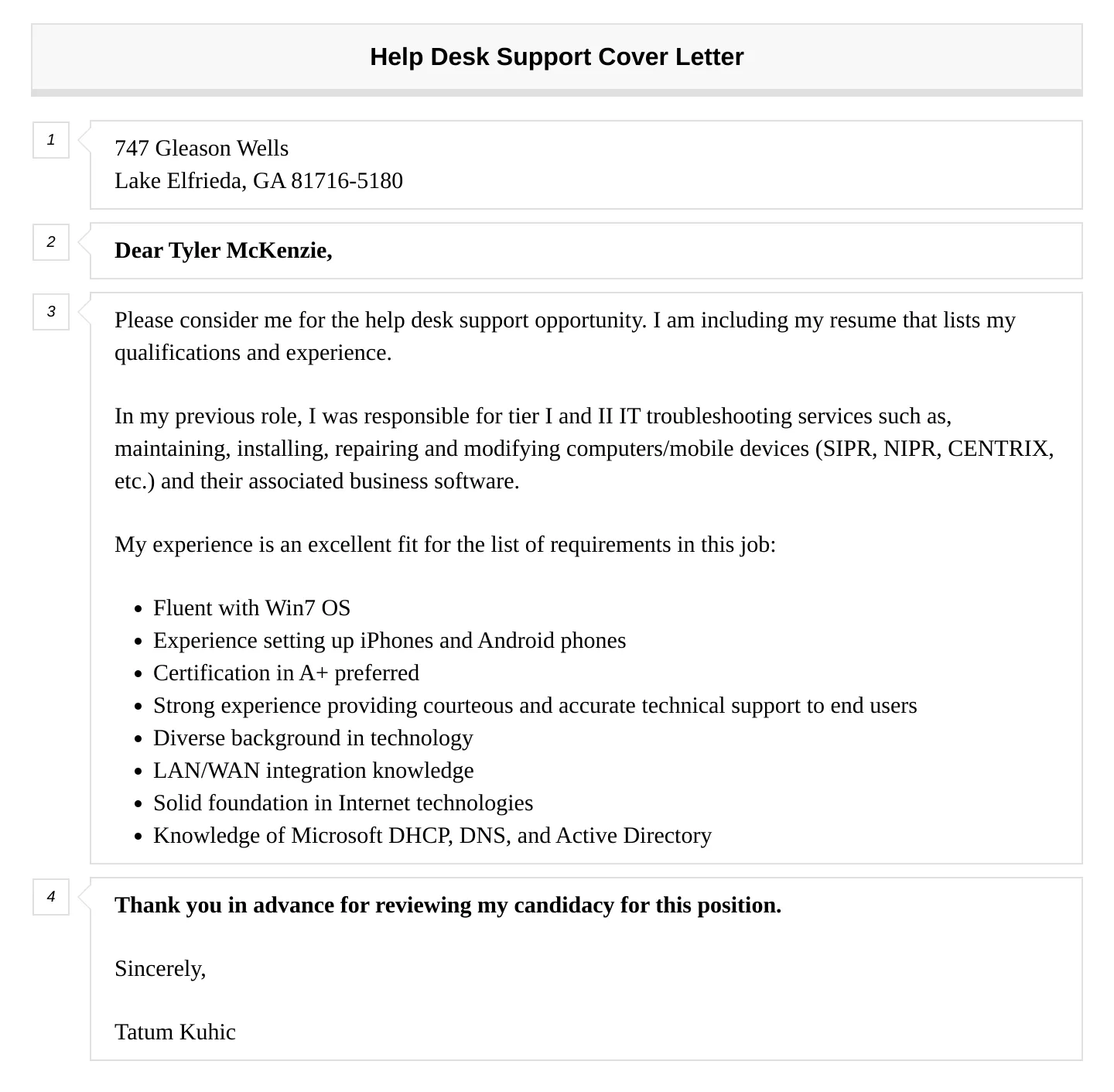
When showcasing your experience, focus on the most relevant roles and accomplishments that align with the help desk support position. If you have prior experience in customer service, technical support, or IT-related roles, highlight them. Provide specific examples of how you have used your skills to resolve technical issues, assist customers, or contribute to the success of a team. Even if your previous experience is not directly related to IT, identify transferable skills. For example, communication, problem-solving, and organizational skills are all highly valuable in a help desk support role. Explain how your past experiences have prepared you for the job, highlighting any tools, technologies, or methodologies you have worked with. Ensure you tailor your examples to the job description, demonstrating how your experience meets the employer’s needs.
Quantifying Your Achievements
Quantifying your achievements makes your cover letter more impactful and credible. Use numbers and data to illustrate your accomplishments. Instead of saying “Improved customer satisfaction,” state “Improved customer satisfaction by 15% through proactive troubleshooting.” Quantify the number of tickets you resolve per day, the average resolution time, or any other metrics that demonstrate your efficiency and effectiveness. This evidence of your performance is important. If you’ve implemented a new process or tool that led to improvements, quantify the results. For example, “Implemented a new knowledge base that reduced average call handling time by 10 minutes.” Quantifying your achievements provides concrete evidence of your abilities and shows the employer the tangible value you can bring to their team. This use of numbers allows the employer to easily compare you with other candidates.
The Closing
Your closing should reiterate your interest in the role and the company. Express your confidence in your ability to succeed in the position. Thank the hiring manager for their time and consideration. Include a call to action, such as requesting an interview. Make it easy for the hiring manager to take the next step. Provide your contact information again, just in case they missed it in the header. Keep your closing concise and professional, leaving a positive final impression. The closing should be confident and enthusiastic, leaving the reader with a sense of your value and willingness to contribute.
Proofreading and Formatting
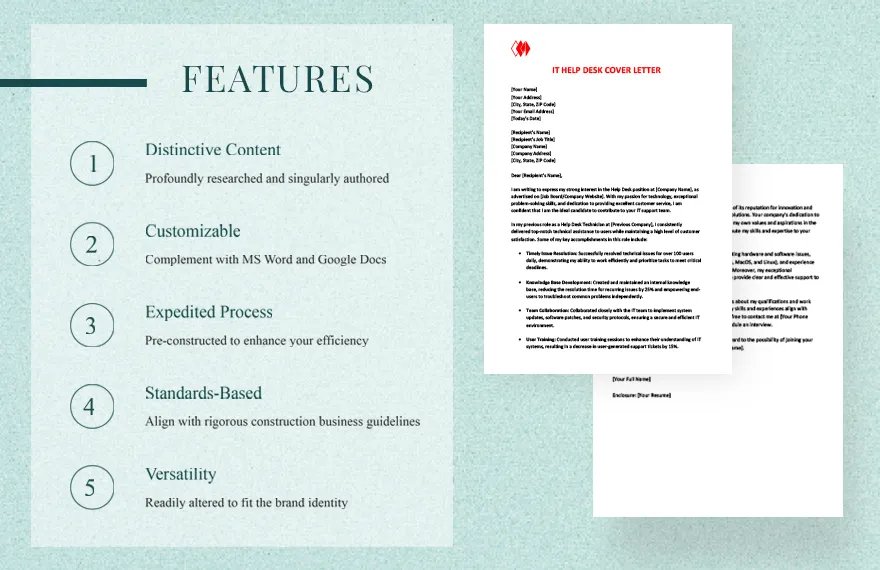
Proofreading your cover letter is absolutely essential. Errors, typos, and grammatical mistakes can undermine your credibility. Carefully review your letter for any errors in grammar, spelling, and punctuation. Ensure your formatting is consistent and professional. Use a readable font, such as Times New Roman or Arial, and keep the font size at 11 or 12 points. Use clear headings and subheadings to organize the content and make it easy to read. A well-formatted letter is easy to read and shows attention to detail. Proofread your cover letter multiple times, and consider having a friend or colleague review it as well. This step is key in ensuring that your cover letter is error-free and professional.
Common Mistakes to Avoid
Generic Openings
Avoid generic and impersonal openings. Phrases such as “To whom it may concern” or “I am writing to apply for the position” are overused and do not capture the hiring manager’s attention. Instead, use a personalized greeting and introduce yourself in a way that shows your enthusiasm for the role. If you know the hiring manager’s name, use it. If not, use a more personalized approach, such as addressing the hiring team or referring to the specific job title. A strong opening sets a positive tone and makes the hiring manager want to read the rest of your letter. A more tailored opening will stand out from the standard template.
Focusing Solely on Responsibilities
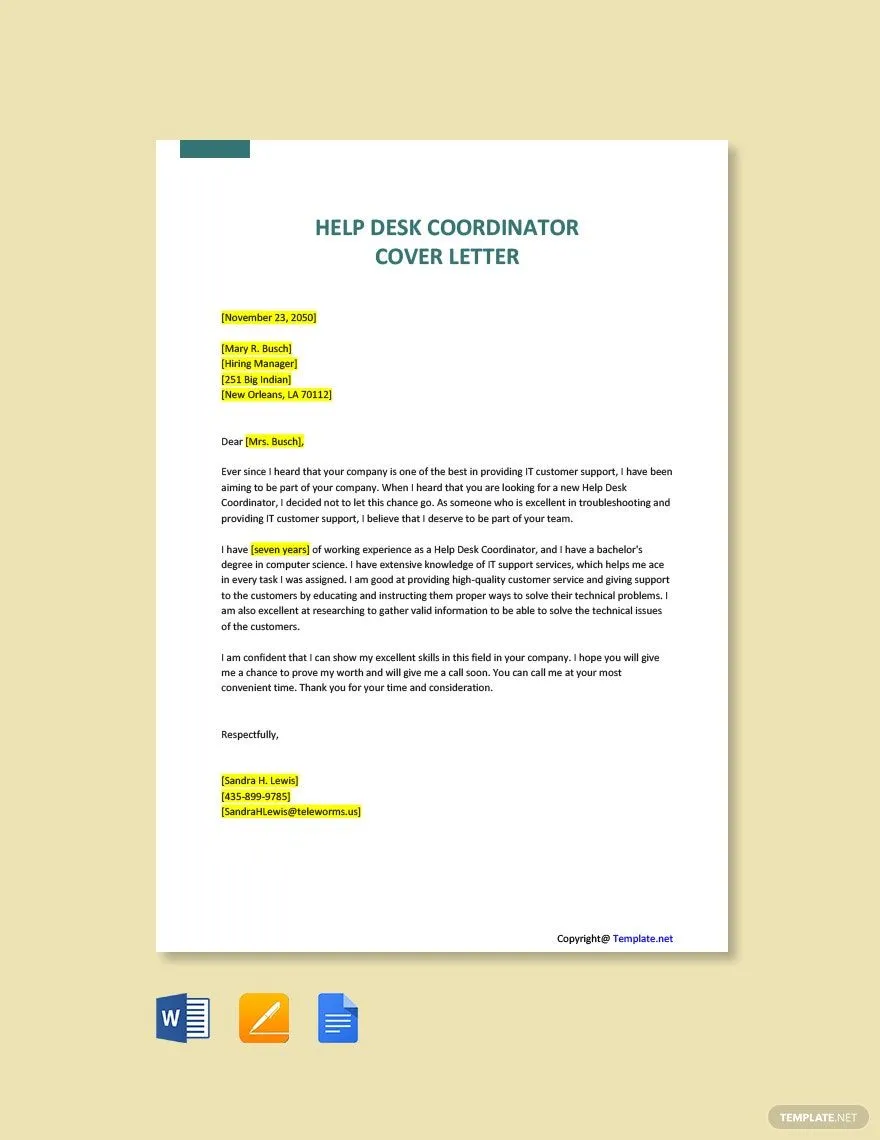
Many applicants make the mistake of simply listing their past job responsibilities. This does not demonstrate your value or differentiate you from other candidates. Instead, focus on your accomplishments and the results you achieved. Use the cover letter to show, not just tell, what you’ve done. Include specific examples and data to back up your claims. Quantify your achievements and highlight the positive impact you have made in previous roles. By focusing on what you have accomplished and the skills that you have gained, you can show the hiring manager that you are the right fit for the job.
Failing to Tailor Your Letter
Failing to tailor your cover letter to the specific job and company is a common mistake. Generic cover letters give the impression that you are not truly interested in the role or that you haven’t done your research. Always customize your letter to align with the job description and the company’s values. Research the company, understand its mission, and show how your skills and experience can contribute to its success. This personalization demonstrates your genuine interest and increases your chances of being noticed. Show the company you care by doing the research, showing them that you are a good fit.
The Importance of Proofreading
Proofreading is a crucial step in the cover letter writing process. Errors in grammar, spelling, and punctuation can damage your credibility. These errors reflect poorly on your attention to detail, which is essential in a help desk support role. Before submitting your cover letter, carefully proofread it multiple times. Check for typos, grammatical mistakes, and inconsistencies in formatting. Consider having someone else review your cover letter as well, as a fresh pair of eyes can often catch errors that you might miss. A polished, error-free cover letter shows your professionalism and increases your chances of making a positive impression. Thorough proofreading is essential.
